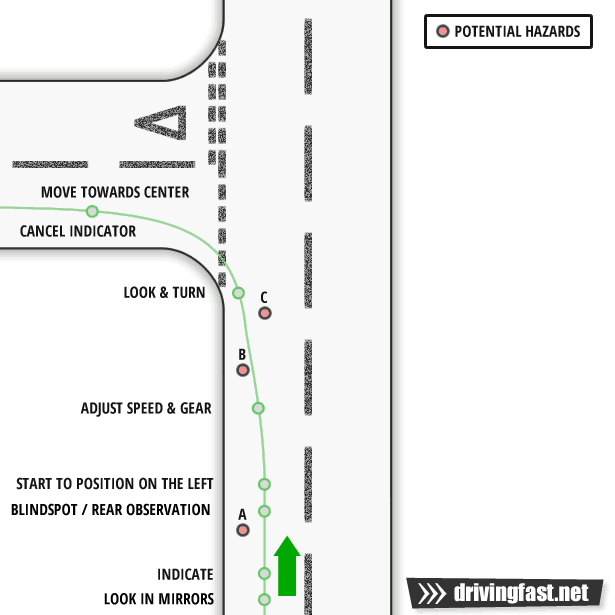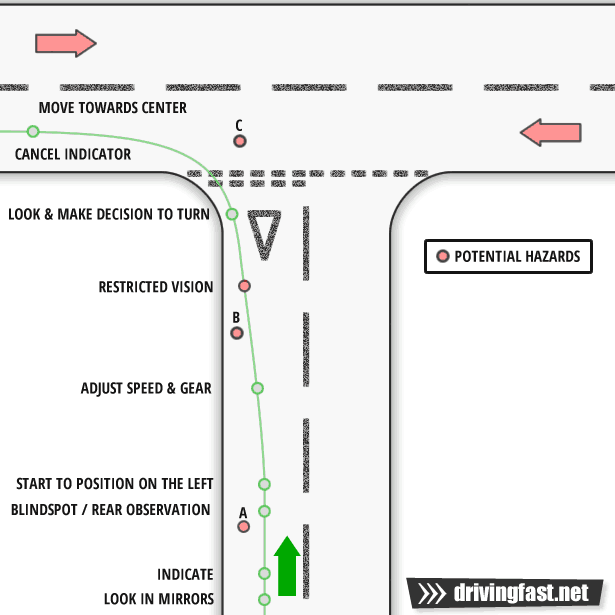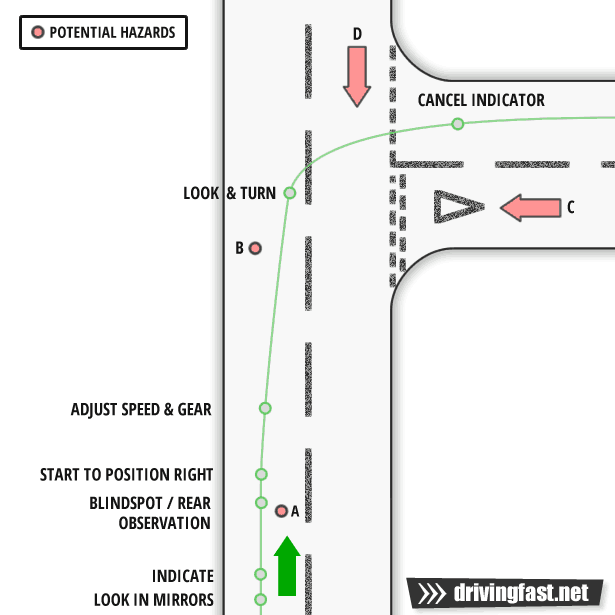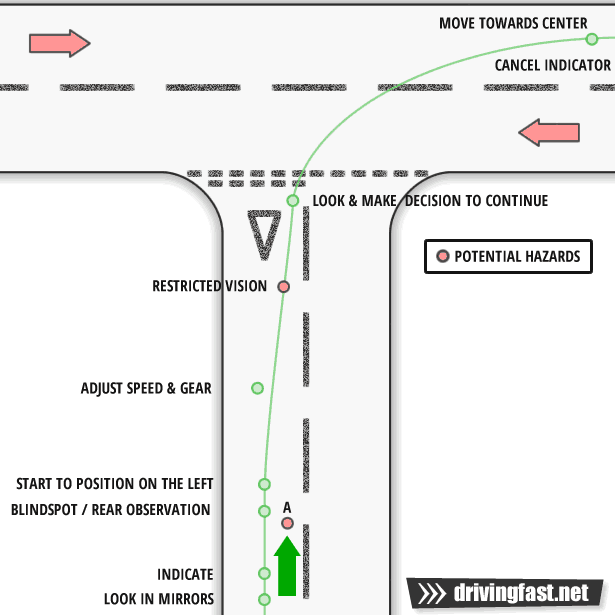Guide to junctions for motorcycle riders
Types of junction
The UK driving standards agency (DSA) defines junctions as one of the following:
- T-junction
- Y-junction
- Crossroads
- Roundabouts
- Staggered junctions
This article will cover all of the above.
Junction options
- While riding on a major road* you may want to…
- Continue straight on passing a minor road
- Leave by turning right onto a minor road
- Leave by turning left onto a minor road
- While riding on a minor road, you may want to…
- Cross a major or minor road travelling straight ahead
- Emerge into major road by turning right
- Emerge into a major road by turning left
*Note: A major road is defined as one with priority over another road at a junction.
Things to do at any junction
The UK driving standards agency uses the OSM PSL acronyms, which are used in all their materials and these stand for the following:
- Observation
- Understand the general traffic situation
- Anticipate hazards
- Check mirrors
- Signal
- Use the indicators in good time to let other road users know what you’re up to
- Manoeuvre
- Use the PSL routine
- Don’t forget to cancel your indicator once you’ve completed the turn
- Position
- When turning left, head to the left of the road, or go to the centre of the road (on a two way street) if you plan to turn right.
- Speed & gear
- You’ll normally need to slow down to take a junction, so roll of the throttle gently, apply the brake if necessary, and select a gear which will take you through the corner without a further change.
- Look
- Look around the corner as soon as you have visibility.
- Watch for traffic and hazards.
Turning left from a major to a minor road
Main potential hazards
A. Cyclists, other motorcycles on your left undertaking or in your blindspot
B. Parked cars may affect your ability to position toward the left hand side of the road
C. Cars could brake suddenly and turn without indicating
Procedure for major to minor road, turning left
As with all manoeuvres, perform the OSM PSL procedure. Check your mirrors first, and indicate to show your intentions. Before you change your position, it’s sensible to do a ‘lifesaver’ over the shoulder check to watch for cyclists or other motorcycles which may be undertaking. As you move towards the left you’ll probably need to reduce your speed and select a gear which will take you through the corner. As left hand turns are usually sharper than right handers you may need a lower gear. Look through the corner as soon as you can see, decide to take the bend, then start to move towards the centre of the road and cancel your indicator.
Turning left from a minor to a major road
Main potential hazards
– Fast moving traffic approaching from the right on the major road
– Restricted vision approaching the junction
A. Cyclists, other motorcycles on your left undertaking or in your blindspot
B. Parked cars may affect your ability to position toward the left hand side of the road
C. Cars turning right off the major road cutting the corner
Procedure for minor to major road, turning left
Follow the approach procedures of a left turn from a major to minor road, however when turning onto a major road, the chances of having to stop are greater due to fast moving traffic which does not need to give way to vehicles entering the road. Because of this, you’ll need to look at the speed and distance of approaching traffic and make a judgement about whether you need to stop or whether you can continue without having to put a foot down. If your vision is restricted it’s sensible to stop until you’re confident of a safe turn. If there is a stop sign, you must stop.
Turning right from a major to a minor road
Main potential hazards
A. Other vehicles attempting to overtake before the junction
B. Vehicles trying to sneak past you on the left as you wait to turn right
C. People emerging from the junction
D. Fast traffic approaching on the other side of the road.
Procedure for major to minor road, turning right
When turning into a minor road on the right, you will need to cross the lane with potentially fast oncoming traffic and in addition you may hold up impatient drivers behind you. Follow the OSM PSL procedure, use your mirrors, indicate to the right and perform a lifesaver over your right hand shoulder before moving over to the centre of the road. Be aware of oncoming traffic, traffic behind you and road users emerging from the junction. Stop if necessary until a break in the traffic, and turn right being careful not to cut the corner which may inconvenience cars waiting to emerge.
Turning right from a minor to a major road
Main potential hazards
A. Other vehicles attempting to overtake before the junction
Procedure for major to minor road, turning right
As with the over junctions, use the OSM PSL procedure. Look in your mirrors, indicate, perform a right shoulder life saver check before moving to the centre of the road. You might have restricted vision of traffic before you get close to the junction which means you may need to stop. If there is a stop sign you must stop. Look both ways and be careful of fast moving traffic. Emerge from the junction when safe, accelerate up to the speed of oncoming traffic and cancel your indicators.




Leave a Reply